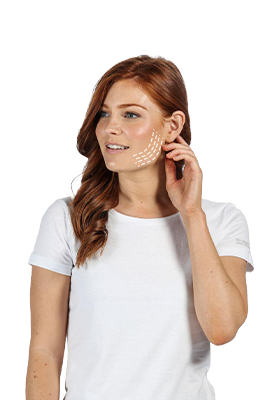RHINOPLASTY SURGERY
Get a free medical consultation


Rhinoplasty is a process of changing the shape of the nose, which is carried out mainly for cosmetic purposes, to increase the harmony between the nose and the rest of the face. Also, it is often performed to treat breathing problems and disorders resulting from deformities or defects in the structure of the nose, as well as due to accidents.
Nose reduction surgery: This can involve specific areas such as the wing, bridge of the nose, or the width of the nose.
Nose augmentation surgery: This type of surgery is often curative in nature and can result from deformity or incomplete growth of the nose, or after surgical removal of a portion of the nose.
Ethnic plastic surgery: Common in certain ethnicities and is characterized by special shape and edge of the nose, such as the people of the Middle East or the Mediterranean.
Accidental plastic surgery: This is performed in a period of one week to ten days after an accident that caused the destruction of some of the bones or cartilage of the nose.
Anesthesia
Anesthesia can be complete or local, depending on what the doctor orders. After that, the process begins, which is performed through an incision in the nose or without an incision.
When cartilage and bone are removed, cartilage transplantation may sometimes be required.
If it is deviated, then the surgical incision, ‘if used’, is closed, and a splint is placed on the nose, then the recovery phase begins.
Before having rhinoplasty, you must follow some tips to achieve good results and avoid complications.

Three weeks before the operation, the patient needs to undergo some laboratory tests, as well as an electrocardiogram.

The patient should stop taking any medications that may cause blood flow and delay blood clotting two weeks before surgery, and these medications include some analgesics such as aspirin and medications containing ibuprofen.


You should avoid drinking alcoholic beverages before and after surgery, and also quit smoking or using nicotine.
Rhinoplasty does not require a long recovery period, as the patient can leave the hospital the next day after surgery, and sometimes in the same day.
However, this varies from person to person, also, the technique used in surgery causes differences in recovery periods. Follow your doctor’s instructions after surgery to ensure a healthy and quick recovery.
After the operation, the nose will be different, and its shape will begin to gradually change with the disappearance of the swelling, if you followed the doctor’s instructions, including avoiding exposure to sunlight, so that the nose takes its final shape within a certain time, from two to 12 weeks.
We offer you our high quality health services that achieve what you dream of




